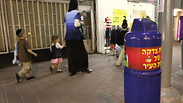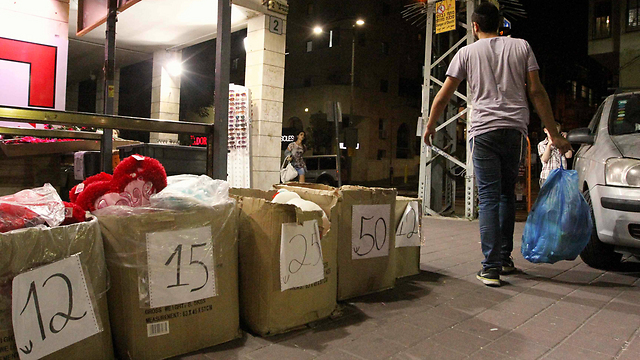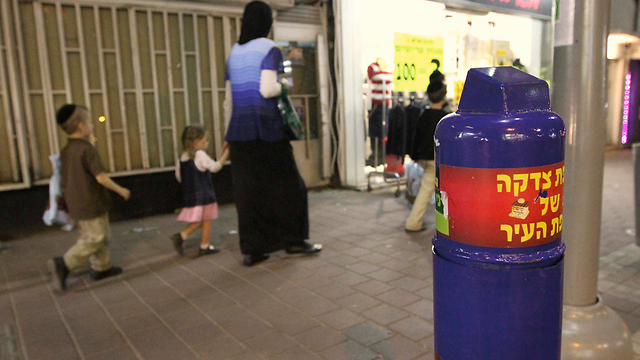
Cities in center have highest work rate, haredi cities finish last
Haredim at bottom of labor force with secular Tel Aviv nearly double labor force participation rate of cellar dwellers Bnei Brak, Jerusalem. Commute from West Bank felt the most: 84.5% work outside of region
The labor force participation rate in Rishon Lezion and in Tel Aviv is almost 50% percent higher than the rate in haredi city of Bnei Brak, a Central Bureau of Statistics report revealed late Thursday.
The report, which took statistics from the fourth quarter of 2013, also showed that more than half of Israelis work in a city different from where they live.
In Rishon Lezion, 73.4% of residents who are ages 15 and up have jobs, and in Tel Aviv, the percentage also hovered above 70%. In cities where there is a strong haredi population, such as Jerusalem and Bnei Brak, the labor rates are at the bottom, standing at 47.7% and 51.3% respectively. In those two major cities in the last quarter of 2013, however, there was a small rise in the average.
Related stories:
- Shulamit Aloni: Savior of the haredim
- The Israeli family: 2.4 children, enjoy eating out
- World braces for retirement crisis
Cities in the center, the report illustrated, have had the highest labor participation rate in the country in recent years. In the entire Jerusalem area there was a slight rise from 2012, while in the north there was a slight drop.
Commuting
The report also studied commuting in the country, a new phenomena which has only recently received a Hebrew word of its own – yomemut . In 2013, the number of workers working where they lived slightly decreased to 54.6%. As well, 15% more men work outside their city compared to women.
In the West Bank the lack of industry is felt the hardest. More than two thirds work outside of the settlement where they live, and 84.5% of them work outside the West Bank. Jerusalem had the lowest level of intercity commuting at 22.6%.
In 2013 there were 21,000 citizens who declared they had given up looking for jobs. The amount of Jews in this position dropped from 2012 by 11% to 59.7% of the total.
A third claimed there was no suitable work for them, while a fifth said they could not find work close enough to home.
In 2013, there were 97,800 single female parents, with 77.6% of them working, which is an increase of 4% from 2012. More than half are mothers to only one child.
Two thirds are employed full time, while only 67.8% of women in general in the country are employed and 69% of Jewish mothers are employed.












